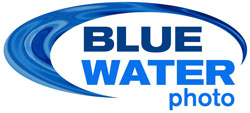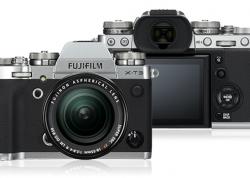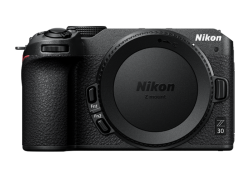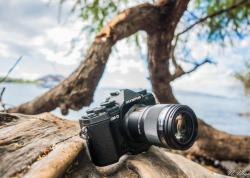First Impressions: Panasonic GX1 Mirrorless Camera
GX1 First Impressions
Panasonic GX1 Mirrorless Camera
Nauticam GX1 housing
By Kelli Dickinson
Panasonic has a new mirrorless camera on the market, the GX1. This camera takes things up a notch from the popular G series cameras that were previously released, the GF1, 2 and 3. Relabeling the camera as GX as opposed to GF is possibly meant to make it clear to consumers that Panasonic has a whole new vision for this model. The GX1 offers a 16MP "live-mos" sensor, 3" LCD screen and ISO sensitivity up to 12,800, in addition to improved auto focus and touch screen capabilities.
GX1 Design & custom settings
Overall I was very pleased with the design of the GX1. It fits well in your hands with a grip that is not too large but also not so small as to render it useless. The buttons on the back are arranged in a classic and easy-to-use manner. There is a mode dial on the top of the camera for quick and easy mode selection. The mode dial includes your standard M, A, S, P, Scene and Art Modes, but also has two Custom settings where you can store a favorite camera setting for quick access.

Panasonic's GX1 offers an easy-use mode dial which includes two custom settings, switch on and off and a separate record button for quick video access
The GX1 appears to take a step back to more classic design than going with what is trendy with newer cameras who all strive to be the smallest and sleekest with wheels and touch functions rather than standard buttons and dials. The GX1 maintains a nice balance between classic styling and new technologies with an easy-use control dial on the back, a more standard array of buttons as well as touch screen capabilities.
The blocky body design allows room for the standard array of buttons, which is refreshing in an age where sleek design often takes precedence over the quicker function of buttons. A circular array of four buttons with a center main menu button offer quick access to ISO, white balance, single/continuous/timer and auto focus mode settings, while four buttons surround those central ones offer display settings, auto/manual focus selection, a quick menu and a customizable function button. In addition there are two buttons above the LCD, play for picture review and an AF/AE-lock which is also customizable.
The GX1 takes a stand with a more classic design keeping important buttons and dials as well as including new features like touch screen capabilities.
As a primarily Olympus camera user, I found the aperture/shutter speed control dial on the GX1 to be fantastic. Similar to dials found in dSLR cameras, it made it very simple to change modes and literally dial in your settings quickly. Unlike the Olympus PEN series mirrorless cameras, which use the up and down and left and right buttons to control shutter speed and aperture respectively, the simple turn of a dial is made for quick and easy setting changes. Be careful though: since there is only one dial for controlling both shutter speed and aperture, you need to press the dial in to switch between the two functions. Move too quickly while changing settings and you may find yourself suddenly changing the shutter speed when you meant to be adjusting aperture. This was also fairly problematic when the camera was in an underwater housing.
One downside to the camera I found was the menu system. The menu takes some getting used to, as the function, or "quick menu," which is usually found in the center of the main buttons on many camera brands, is actually now located as the bottom left button, and the main menu is accessed through that center button. I found this confusing, as my Olympus and many previous compact cameras had trained me for the opposite.
The large 3" LCD screen is clear and bright, making it easy to review and set up shots, even while underwater. The GX1 includes a useful orientation sensor that allows you to easily orient the camera for horizontal, vertical and any diagonal compositions. This is turned on and off through the display button.
GX1 Focus speed & performance
Overall I was impressed with the performance of this camera. The auto focus is extremely fast, making my old Olympus EPL1 feel like a dinosaur. Even underwater, the GX1 would focus just about instantaneously, I even had one moment when a small rockfish darted at me from a black crevasse, and the camera was able to focus and snap a shot as it turned and darted off. Definitely impressive. Paired against the newer Olympus models the auto focus is equivalent, if not even a bit faster.

Not the most stunning shot, but this kelp rockfish surprised me as it darted out of a crevasse and I quickly snapped the shutter - thanks to the fast focus speed I was able to capture him as he darted away.
I was able to test the camera with the standard 14-42mm Lumix Vario lens. Overall the lens worked well, with nice optics providing good clear pictures, however focus distance is definitely a limiting factor with this lens. I found the closest focus distance available offered images up to 4 inches across, unlike my Olympus EPL1 14-42mm lens which allows focusing for images up to just two inches across.
Panasonic 14-42mm PZ lens
Panasonic has also released this camera with their new 14-42 Lumix Vario PZ (Power Zoom) lens. We tested this lens in the store, and it seems very well suited to video, with the power zoom design, and the ability to control how quickly the lens zooms. The lens zooms silently, which is another nice feature. The macro capability is a little bit better than the regular version of the lens.

Macro shot of a clown dorid, uncropped using the Dyron 67mm macro lens - for good macro with the GX1 I would recommend using a dedicated macro lens.
The plus side to focus limits on the two kit lens options is that Panasonic makes a really nice 45mm macro lens and Olympus is releasing a new 60mm macro lens for the micro four thirds cameras sometime this fall. If you really want great macro, there is no substitute for a dedicated macro lens, and both of these will work well with the GX1.
I really enjoyed using this camera, and it shows a lot of promise for great underwater use. The easy, functional design, quick auto focus, 16MP sensor and other neat features such as the orientation sensor will all aid in allowing for easy composition, control and capture of great underwater photos.
Nauticam GX1 Housing
The Nauticam GX1 housing is very small and well built. It felt designed to fit in your hand very well. The shutter button is sensitive and easy to get to, and half-press focus is easy to achieve. Ports are available for all lenses you would want to use, including the 8mm fisheye, 7-14mm, 9-18mm, both Panasonic 14-42mm lenses, and the 45mm macro lens. The 14-42mm PZ lens zoom gear has not been released by Nauticam yet, but hopefully it will soon.
The port release system worked very well, no twisting of the port was necessary and changing ports could be done quickly. All buttons were easy to press while holding the housing, and the knob for changing aperture / shutter speed was easy to use even with 5mm gloves on. One dial changes both aperture and shutter speed. To switch from one to the other, you simply press the dial. The only downside of this design is if you change your aperture or shutter speed too quickly, you may find that it switches from one to the other inadvertently.
Priced at $1,200 - we find that this is the best deal on the market for an aluminum housing for a mirrorless camera. Competing with the GX1 is the Olympus OM-D E-M5 in a Nauticam housing. The camera and housing costs more, but it is a slightly higher end camera that we will be reviewing very soon.
GX1 Camera and Housing feedback from Swee Sin Eng
Swee used the camera and Nauticam GX1 housing on a recent trip to Komodo, Indonesia. Here is some of his feedback:
Using the GX1 and 45mm macro lens:
Surprisingly the 45mm macro lens was quite responsive and accurate. I had no problem using it in day time, and it auto-focused great. For night dives, i used it with Sola 600 light and it work perfectly. The only problem, was when the red focus light was on, the screen become completely red and it was hard to see the subject. The macro lens can take a photo 18mm across at 1:1 magnification, which is really nice!
The macro port does come with a 67mm thread, but using a wet diopter with this lens means the focus distance is very, very close to the port. I did put a wet lens on the port, and the camera did hunt a lot when trying to focus.
Using the Panasonic 8mm fisheye lens
The Panasonic 8mm fisheye is a very sharp and wide lens, and allows you to create dramatic photos. However, it show vignetting in the normal 4:3 mode. I had to switch it to 16:9 mode to get rid of the shadow causing by the dome shade. The flash sync speed is locked at 1/160th, similar to other mirrorless cameras, which means it is quite difficult to shoot a sunburst shot.
Additional Panasonic GX1 underwater photos
Taken in Komodo, Indonesia.
Photos taken with Panasonic GX1, Leica 45mm macro lens


Photos taken with GX1, Panasonic 8mm fisheye lens



Further Reading
Where to Buy - Support the Underwater Photography Guide
Learn more about the Nauticam GX1 housing at Bluewater Photo.
Please support the Underwater Photography Guide by purchasing your underwater photography gear through our sister site, Bluewater Photo & Video. Click, or call them at (310) 633-5052 for expert advice!
RECOMMENDED ARTICLES
SUPPORT THE UNDERWATER PHOTOGRAPHY GUIDE:
The Best Service & Prices on u/w Photo Gear
 Visit Bluewater Photo & Video for all your underwater photography and video gear. Click, or call the team at (310) 633-5052 for expert advice!
Visit Bluewater Photo & Video for all your underwater photography and video gear. Click, or call the team at (310) 633-5052 for expert advice!
The Best Pricing, Service & Expert Advice to Book your Dive Trips
 Bluewater Travel is your full-service scuba travel agency. Let our expert advisers plan and book your next dive vacation. Run by divers, for divers.
Bluewater Travel is your full-service scuba travel agency. Let our expert advisers plan and book your next dive vacation. Run by divers, for divers.





































